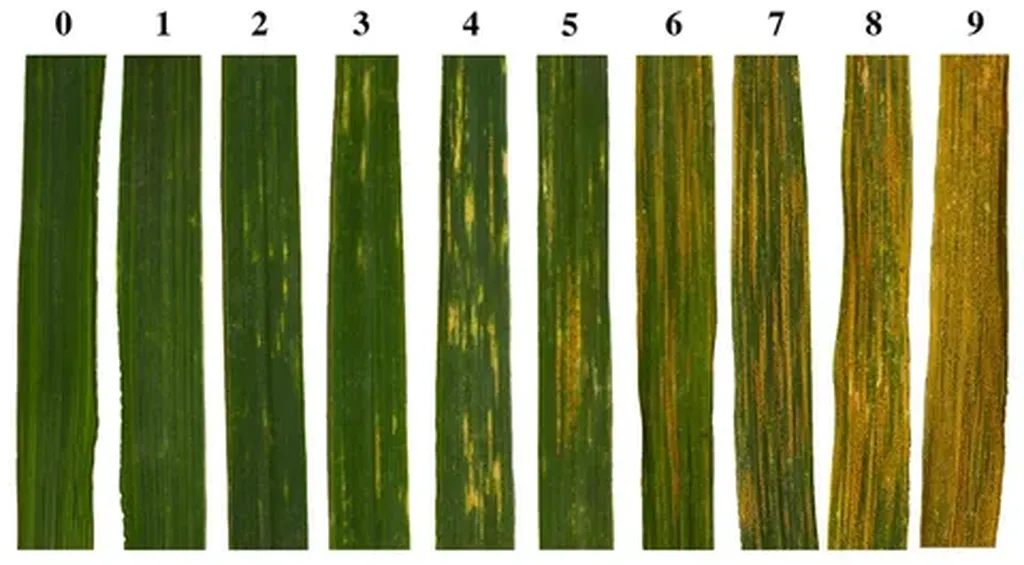In the heart of Poland, researchers are pioneering a method that could revolutionize how we monitor and manage one of wheat’s most devastating diseases: stripe rust. Led by Andrzej Wójtowicz from the Institute of Plant Protection—National Research Institute in Poznań, a team has developed a novel approach that combines everyday RGB imaging with advanced machine learning algorithms to assess the severity of stripe rust in wheat fields.
Stripe rust, caused by the fungus *Puccinia striiformis*, can lead to significant yield losses if not managed effectively. Traditional methods of assessing disease severity rely on visual inspections, which are time-consuming and subjective. “The challenge has always been to find a way to objectively and efficiently assess disease severity across large fields,” Wójtowicz explains. “Our goal was to develop a scalable solution that could provide timely and accurate data to support precision agriculture strategies.”
The team’s innovative approach involves using RGB images captured from both laboratory and field conditions, complemented by hyperspectral measurements. By developing custom image-processing scripts and applying Random Forest classification and regression models, they achieved remarkable accuracy in predicting disease severity. “The integration of RGB-based image analysis with the Random Forest algorithm provides a robust, scalable, and cost-effective solution for monitoring stripe rust severity under field conditions,” Wójtowicz states.
The study, published in the journal ‘Remote Sensing’ (translated to English as ‘Distant Sensing’), demonstrated that the combined use of nadir (downward-facing) and oblique (angled) RGB imagery achieved the highest classification accuracy, sensitivity, and specificity. This dual-perspective approach proved particularly effective, with oblique images being more sensitive to early-stage infections and nadir images offering greater specificity.
The implications of this research extend beyond the fields of Poland. As the global population grows, the demand for sustainable and efficient agricultural practices increases. Early and accurate detection of crop diseases like stripe rust can lead to timely interventions, reducing the need for broad-spectrum fungicide applications and promoting more targeted, environmentally friendly farming practices.
“This research opens up new possibilities for precision agriculture,” Wójtowicz says. “By enabling early intervention and optimized fungicide application, we can enhance crop yields and contribute to more sustainable agricultural production.”
The study’s findings highlight the potential of integrating advanced imaging technologies with machine learning algorithms to address longstanding challenges in crop disease management. As the agricultural sector continues to evolve, such innovations could play a pivotal role in shaping the future of farming, ensuring food security, and promoting sustainable practices.
In the broader context, this research underscores the importance of interdisciplinary collaboration in driving agricultural innovation. By bridging the gap between plant pathology, remote sensing, and data science, Wójtowicz and his team have demonstrated the power of combining diverse expertise to tackle complex agricultural challenges. As the world grapples with the impacts of climate change and the need for sustainable food production, such collaborative efforts will be crucial in developing resilient and efficient agricultural systems.

